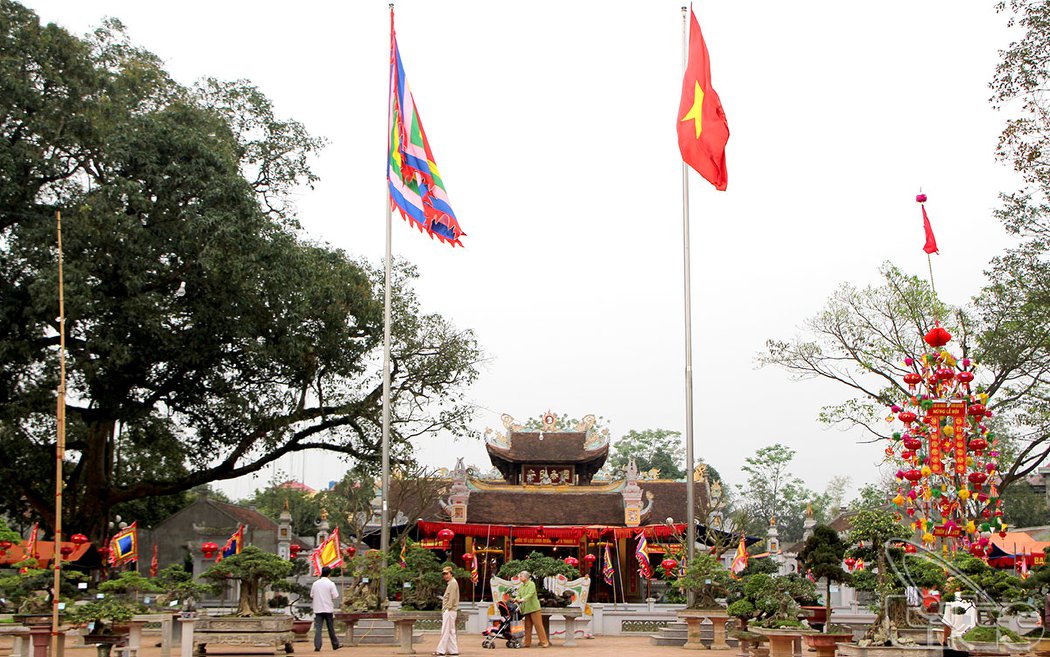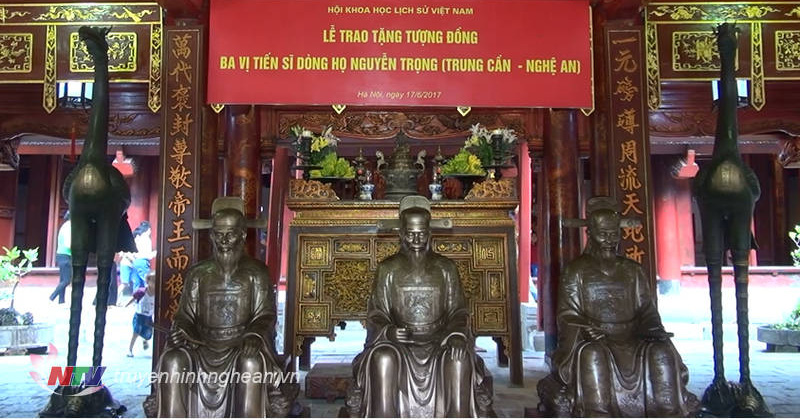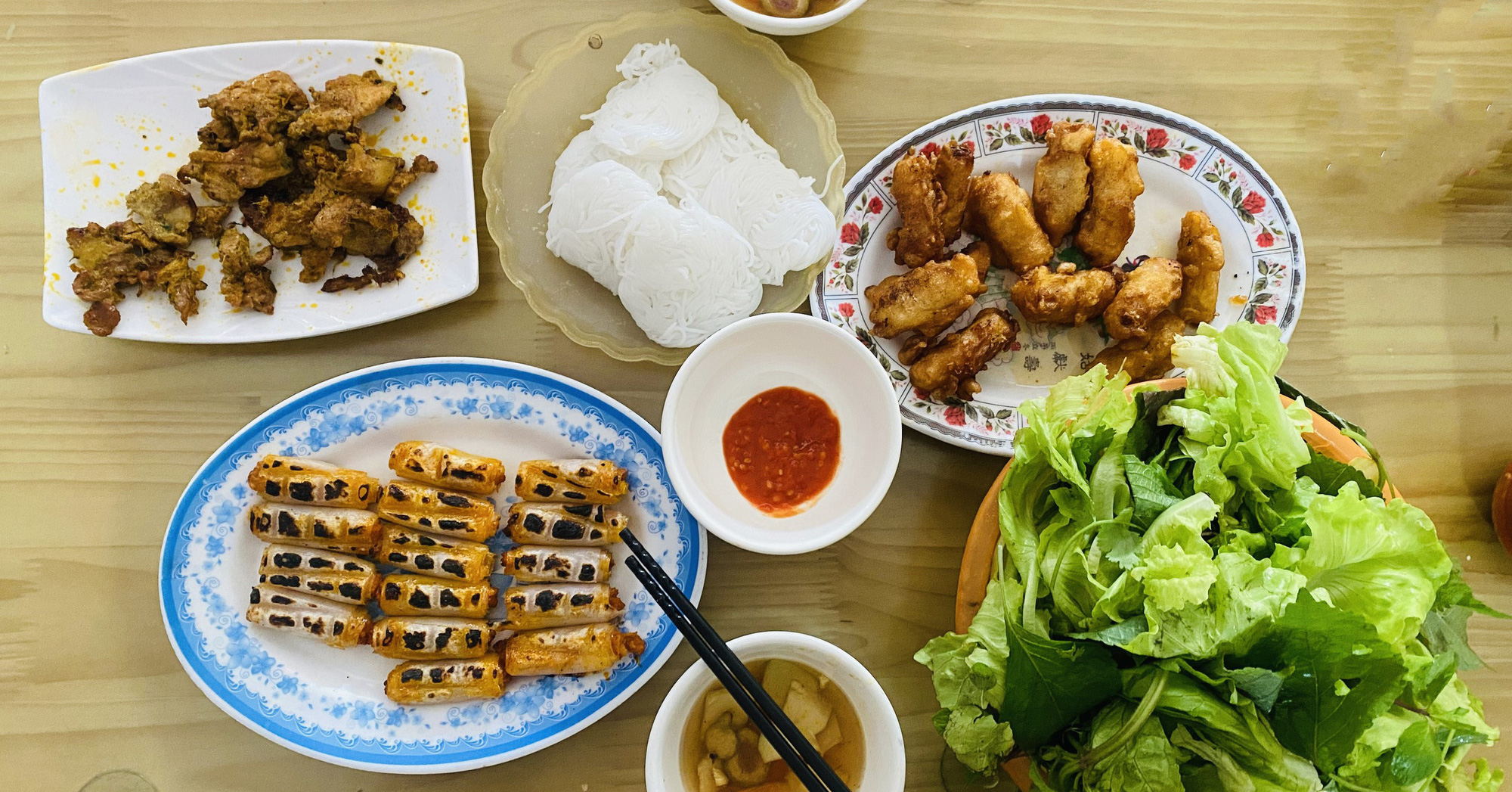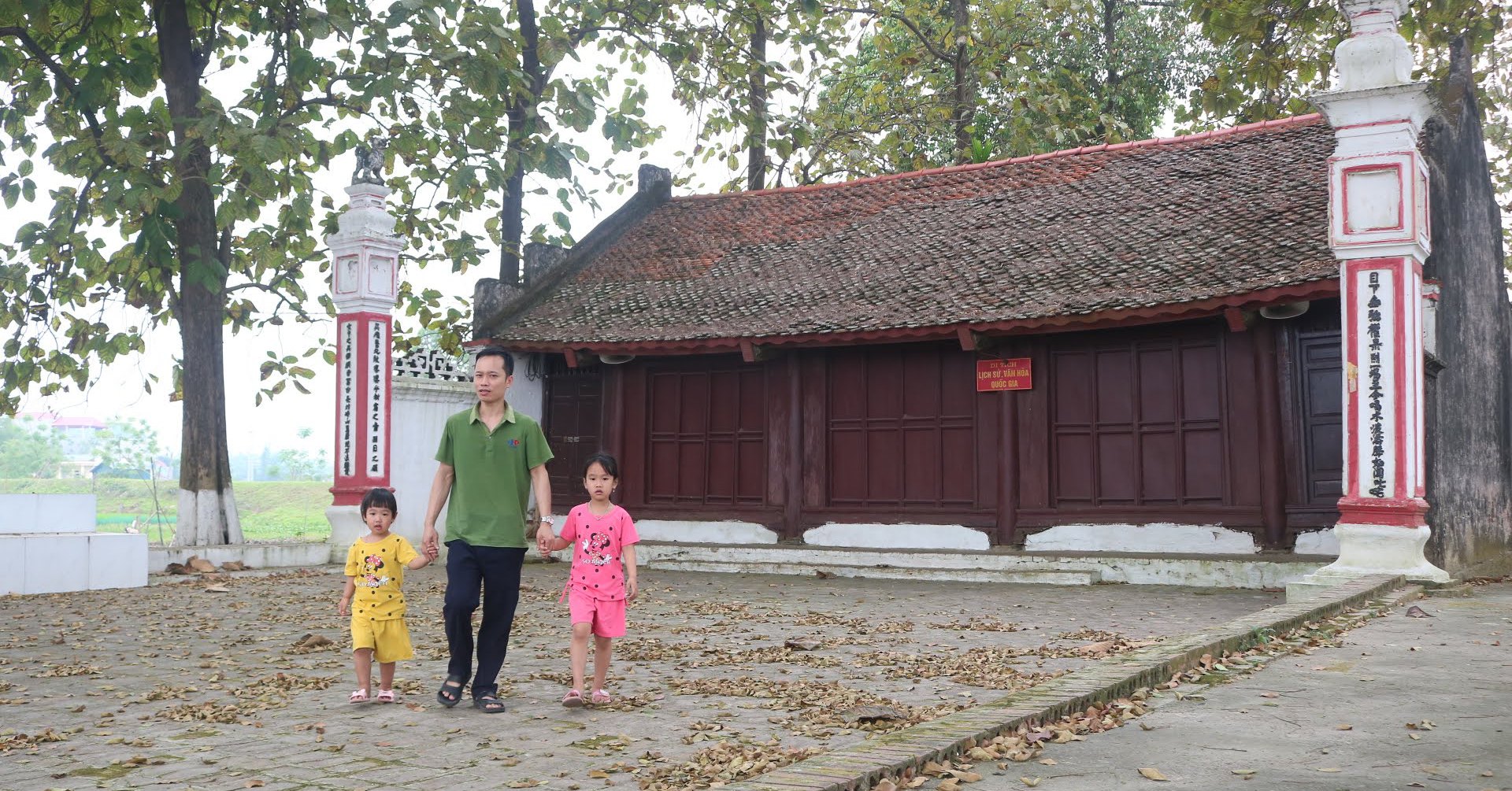Ancient Vietnamese village in the Red River Delta

The scene of Dinh Noi in Binh Da Village Festival. Photo: Nguyen Khoi
I’m not from here, but I have worked in this area for a few years and have attended village festivals a few times. Later, when I had the opportunity to learn more, I realized that Binh Da is an ancient Vietnamese village with many unique features.
Mr. Le Tien Ky is 85 years old this year (former Principal of Thanh Oai B High School) confided: “I have not been to many regions in the country, so I don’t understand, but Binh Da village in my hometown has more than 10 relics. History includes: communal houses, pagodas, temples, shrines; in which there are rare relics from more than a thousand years ago such as the scroll used to sacrifice in Binh Da village festival, Dong Son bronze drum Hege 1, horizontal painting with a couple of couplets originating in the year “Khai Dinh Ky Goat Autumn”… Especially, according to legend, after parting with Au Co, Lac Long Quan led 50 children to the sea to explore, to the land of Bao Da, Bao. In the old days (in the reign of King Minh Mang changed it to Binh Da), seeing that the terrain was satisfactory, he stopped to earn a living.
After his death, he was buried in Tam Thai hill (also known as Ba Go). Commemorating the merits of Duc Quoc To, the people in the region built a communal house to worship Lac Long Quan (also known as Dinh Noi). In the spring of 1077, Prince Linh Lang (son of King Ly Thai Tong) returned to recruit troops and set up tents here. After leading the army to fight the Champa invaders and sacrificed himself, he was crowned Linh Lang Dai Vuong by the court. Remembering his merits, Binh Da villagers honored him as the second village tutelary and worshiped him at Dinh Ngoai. A special feature in the Communal House worshiping Duc Quoc To Lac Long Quan is that in addition to the inscriptions, bronze bells, and diaphragms dating from the Ly and Le Trung Hung dynasties, there is also a relief from the Dinh dynasty. , more than 1000 years ago.
The bas-relief is very elaborately carved with figures of Duc Quoc To Lac Long Quan watching the boat race scene, next to 18 maids offering their honors; More than 30 mandarins and martial arts stood to serve and assist, along with soldiers, elephants and tigers to protect him. That’s why in 2015, the Prime Minister signed a decision to recognize the relief as a national treasure.

A corner of Binh Da Village Festival. Photo: Nguyen Khoi
There has not been a document that records the Binh Da village festival from which time, only know that it is very old. Mr. Tran Van Mat, former Ha Tay province official who lives in the same residential area as me, said: “In the past, the Binh Da Village Festival was held every year to pay tribute to the merits of the two village tutelary emperors on that day. The main death anniversary of Linh Lang Dai Vuong (February 26 of the lunar calendar) and the cavalry day of Duc Quoc To Lac Long Quan (March 6 of the lunar calendar).
In recent years, in order to save time and focus on production and business, the village festival is shortened from March 3 to March 6 every year. I have the good fortune to work in an educational unit based in the area for four years, so at least twice I have been invited by local friends to attend the Binh Da village festival. Usually, on the main holiday, the people of seven villages in the village prepare all kinds of offerings, vegetarian products (incense, flowers, fruit) are offered to the Inner Communal House to worship Duc Quoc To Lac Long Quan, while the salty ceremony is carried Go to the Outer Communal House to sacrifice to Linh Lang Dai Vuong”.
There is a unique point in the Binh Da village festival is the ritual of offering cows and releasing banh Via. The old people who played the role of guardians at Dinh Noi and Dinh Ngoai said: “The cow sacrifice is to commemorate the birth of Linh Lang Dai Vuong for the cow slaughter before going to battle the enemy. The cow chosen to raise must be a bull. before the ceremony, the family selected for the sacrifice must find fresh grass for the cows to eat, use fragrant leaves such as lemongrass and incense to boil water for the cows to bathe in. Taken to the Outer Communal House, the live cow sacrifice is held the day before and the next day is the “action” of the ripe cow.
The cow is cooked to golden brown evenly, placed on the altar, with its head turned into the communal house. After the sacrifice is complete, the cows are cut into small pieces and then divided among households in the village called “lucky” for a peaceful year-round life and prosperous business.
Also, the ceremony of releasing banh Via to pay tribute to the merits of National Ancestor Lac Long Quan in the Binh Da village festival is also a thrilling story. Because, in the village, there are seven or eight clans, but only the Nguyen Van family is chosen to make banh Via. The reason why, no one knows, only know that this rule was left from ancient times. How to make cakes, how much is only the patriarch of the family Nguyen Van, this secret is passed on to the patriarchs of the next generation in the family.
The ingredients for the cake are pounded glutinous rice mixed with many traditional herbs; The cake making place is covered with red cloth and the “stages” of making cakes are performed only by the head of the family Nguyen Van. After the cake was boiled, the patriarch took the cake to Dinh Noi to light incense for the ceremony the night before, the next morning (on the 6th day of the 3rd lunar month), the ceremony to drop the cake into the Ngoc well.
Explaining the custom of dropping the banh via into Ngoc well, the old man from Dinh Noi said that this well has an underground circuit connected to the aquarium, which Quoc To Lac Long Quan was like a dragon, living in the river, so the cake offered to him must be given to him. Dropped from the Ngoc well and followed the underground circuit to the aquarium, only Duc Quoc To received it… Perhaps because of these unique features, in 2014, the cultural sector and Hanoi City People’s Committee had a decision to recognize the Binh Village Festival. Da is the first intangible cultural heritage of the capital.

The relief is recognized as a national treasure. Photo: Nguyen Khoi
“First firecracker in Binh Da, second chicken in Dong Tao”, that song has been handed down in folklore since before 1995 to emphasize the traditional firecracker-making profession of Binh Da village dating back to the Nguyen Dynasty. Mr. Le Van Khiem, former physics teacher, a colleague of mine 38 years ago, from Minh Kha village shared: “In the years of subsidizing until the Prime Minister issued the policy to ban firecrackers (1995), people In the villages of my Binh Da village, families make firecrackers and people make firecrackers.
At that time, outside of class time, servants and teachers in the village and commune, along with their wives and children, took advantage of making firecrackers because this profession gave a good income. However, due to the desire to produce firecrackers, the children in the village are somewhat negligent in their studies. Customers buying firecrackers at that time were not only districts in the province, but Binh Da fireworks were also transported to Yen Bai, Son La and as far as Quang Binh and Quang Tri.
Every year on the festival of the village, besides the main ceremonies, there is also a fireworks contest, fireworks, fireworks… Recalling those years, many cadres and civil servants (houses in Ha Dong and Ha Ha) Noi) but working in Thanh Oai, including myself a few times a week on the way home, still find a way to carry a bag of firecrackers to earn more money to improve the miserable and miserable life of the subsidy period.
It must be said that the profession of making firecrackers has helped the people of Binh Da and neighboring villages to generate considerable income, but it is like “riding on the back of a tiger”. Because there is no year without firecracker accidents; In light cases, face burns, amputation of hands, severe cases, five deaths, two or three deaths. Advantages and disadvantages, the sound of firecrackers exploding on the traditional New Year’s Eve or in the wedding ceremony is also pleasing to the ears and eyes, but immediately goes by incalculable dangers. Therefore, since the New Year of the Pig (1995), Directive 406/TTg of the Prime Minister banned the production, transportation and burning of firecrackers.
A former student of mine from Binh Da village, now working in the Hoang Mai district party committee, said: “In the first few years after the ban on firecrackers, a part of people in the area felt shocked by the confusion in business transformation. But thanks to the close leadership of Thanh Oai district, the drastic direction of Binh Minh commune (the labor hero unit in 1985), the people of the villages in Binh Da village developed livestock and poultry farming; embroidering; building a model of a farm; expanding the service network…”
And the good thing, as Mr. Le Tien Ky said, in recent decades, the percentage of children and children from Binh Da village who have entered universities and colleges has increased by 30-40% compared to the period when the firecracker movement was still there. More than 26 years of making firecrackers have become a thing of the past and become “an old memory” when mentioned. Now, Binh Da town with a network of concrete roads and alleys, high-rise buildings race to make this place more spacious and crowded.
Electronic media Vietnamese people Open the “Village Storytelling” category from March 4, 2020. The category is for all professional and amateur authors who have a love for the countryside and want to share their true stories with readers.
The article must not have been published in any mass media or publication. Authors please specify full name, pseudonym (if any), contact address, email, phone number, account number receiving royalties.
The best and most quality articles will be selected to award prizes every 2 months.
Articles in collaboration with the “Village Storytelling” column should be sent to email: [email protected]; Contact phone: 0903226305.
at Blogtuan.info – Source: danviet.vn – Read the original article here



